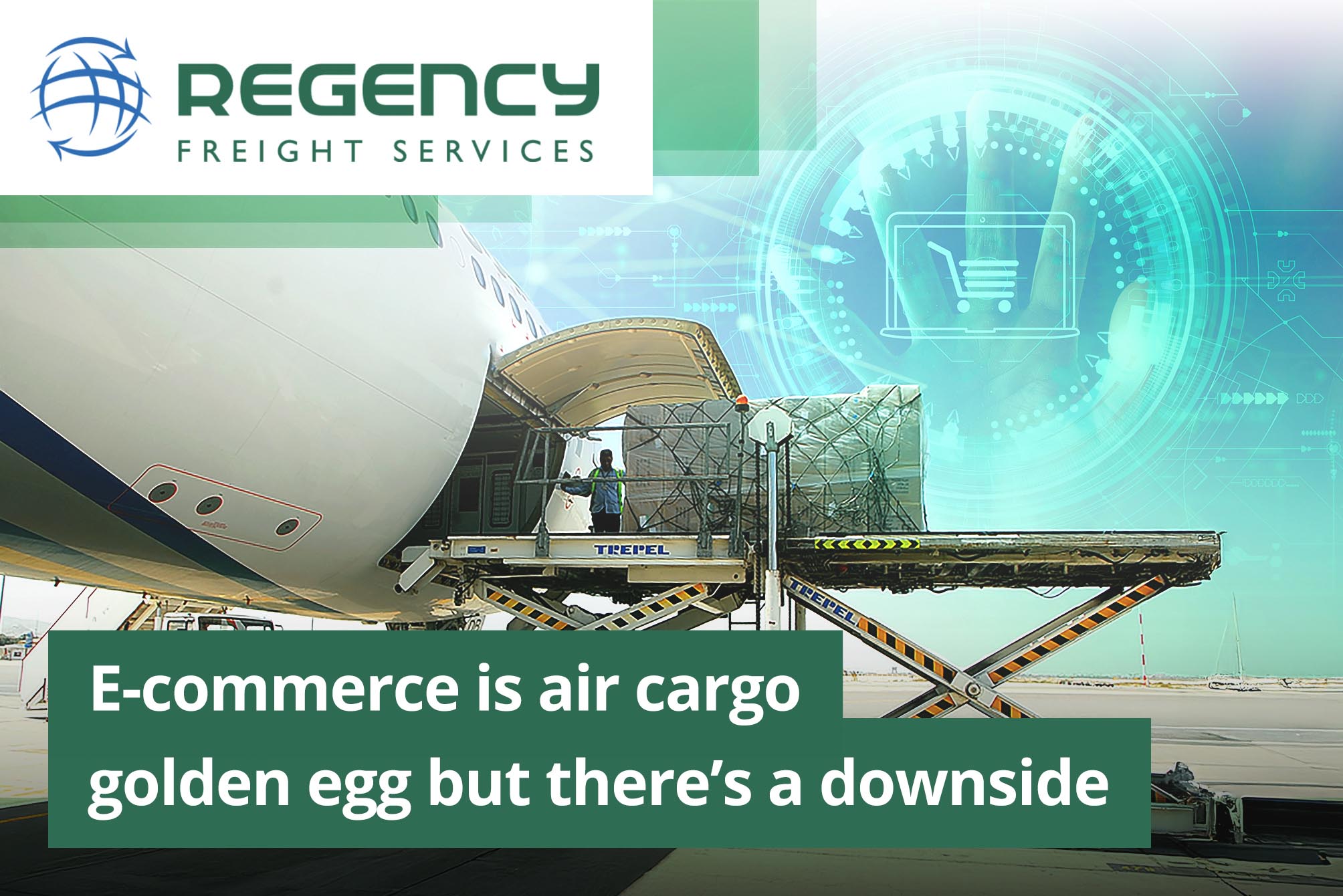E-commerce is air cargo golden egg but there’s a downside20 January 2025
Cross-border e-commerce has indisputably become air cargo’s golden egg in recent years to a point where it is no exaggeration to suggest that it is fast-becoming the sector’s leading commodity surpassing general cargo. Its ascendancy has put a squeeze on the capacity available to other verticals, driving up rates across the sector. The online purchasing boom for consumer goods showed few if any signs of slowing in 2024 and it is very likely that this will continue to be the case in 2025. The sheer size of airborne cross-border e-commerce traffic can be gauged from the reports earlier this year estimating that Chinese online marketplaces Temu and Shein alone were flying 4,000 tons and 5,000 tons daily respectively and one can safely assume such volumes have increased since. Forwarders Left Out in the Cold? However, there is a downside to the phenomenon, due to the vast amount of air cargo capacity it is soaking up and which has led to significant changes in the very physiognomy of transport chains. One industry source estimates that for a number of carriers operating on routes from Asia Pacific to the U.S. and Europe, cross-border e-commerce now absorbs up to 80% of their capacity out of the region. This is said to be driving a wedge between airlines and forwarders, the former leaning towards direct collaboration with major e-commerce players and their logistics partners with the signature of block space agreements (BSA). The upshot is the sidelining of some so-called traditional forwarders. How widespread this has become is unclear but there are examples of carriers offering discounts for direct deals with shippers which cut out the middlemen from the transactional equation. Ground Handling Agents at Risk Too? The onus is on the GHA to adapt their sorting infrastructure to the demands of e-commerce or face the prospect of losing a significant amount of business which could even threaten their very survival. Regulatory Changes to Drive Up Costs This has not only led to increased scrutiny of parcels but to the introduction of changes to advance data requirements as well. There has also been support worldwide for proposals to lower the de minimis and for a strengthening of efforts to uncover imports of fentanyl. Meanwhile, incidents of explosive devices hidden in parcel networks aimed at disrupting supply chain flows – Russia largely viewed as the culprit – has served to push governments into a closer monitoring of the e-commerce sector. New regulatory requirements are likely to come cross-border e-commerce’s way in 2025, but no one will be surprised if the sector adapts quickly to the changes, allowing its ascendancy to continue. However, if greater regulation translates into greater costs, the question e-commerce players will be asking themselves is whether it remains economically viable to transport what are, after all, cheap goods by air? Might this trigger the beginning of a modal shift in e-commerce, with ocean freight, warehousing and localized production coming to the fore? While remaining in the realm of speculation, one possible scenario in the not-to-distant future could be that with the support of AI, e-traders develop a far greater precision in forecasting consumer habits. As a consequence, a significantly high percentage of orders will already be available in stock, which will have reached warehouses via ocean rather than air. Growth Nevertheless in Traditional Verticals James Evans general manager, Cathay Cargo Commercial said that while e-commerce has dominated the news in air cargo and the Hong Kong-based carrier’s own capacity, there have also been tonnage increases in its specialist shipment solutions, namely semi-conductors and pharma. He explained that the airline attended this month’s Semicon Japan show to promote its Cathay Expert service “and the additional care Cathay uses while shipping the big but fragile stepper machines that create the ever-more microscopically detailed semiconductor wafers, which will power the next generation of AI computation in our laptops and mobile devices.” Cathay Cargo is also seeing buoyant demand for its Pharma solution with its IATA CEIV Pharma-certified team making successful use of next-generation Ultra Track data loggers on trial flights between Hong Kong and Miami, working to Hong Kong Airport Authority to Pharma.Aero protocols. As a result, it now has a second Pharma.Aero corridor that is served by a six-times-weekly freighter service. Next summer, Cathay Pacific will resume passenger flights to Brussels – the first Pharma.Aero corridor – along with Munich, which makes its debut on the passenger network. Positive trends from the semiconductor and pharmaceuticals verticals, to which can be added perishables and live animals, means that e-commerce is not having it all its own way in the air cargo sector. By: Stuart Todd |
|
   |
